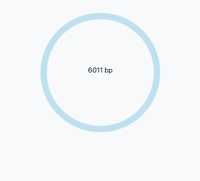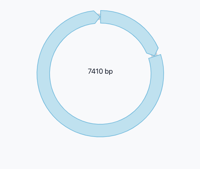Introduction to Constructs
With the Breeze BioCAD you can work with two kinds of constructs: Simple and Modular. Each has their own functionality and purpose, here we explain.
DNA constructs in Breeze
DNA constructs represent circular or linear DNA intended to incorporate genetic material into a target tissue or cell. A construct can be a linear integration cassette for TAR, a simple cloning vector or a more complex expression vector containing multiple operons.
In the Breeze design system, there are two types of DNA constructs:
 Simple Constructs: as the name suggests, these are the simplest form of construct that contain a sequence but no information on the topology or functional structure of the construct.
Simple Constructs: as the name suggests, these are the simplest form of construct that contain a sequence but no information on the topology or functional structure of the construct.
Use simple constructs as reference material from which you can extract parts to create biomodules such as backbones or coding regions, from a source sequence.

Modular Constructs: these constructs contain information regarding functional structure in the form of placeholders and biomodules. Placeholders define the functional units of a Modular Construct which are then filled with Biomodules to complete your design.
Why use Modular Constructs?
We created Modular Constructs to make designing individual constructs and libraries fast and easy:
-
-
Build with reliable, well-characterised parts: the modular approach to construct design provides a rapid method to integrating well characterised parts in your design.
-
Design without concern for manufacture: by using assembly independent biomodules you can design without concern for manufacturability of your construct.
-
Quickly swap biomodules to create variants and libraries: rapidly create variants of your constructs by duplicating them and swapping biomodules from your collection
-
Next:
import a simple construct
Skip to:
design a modular construct